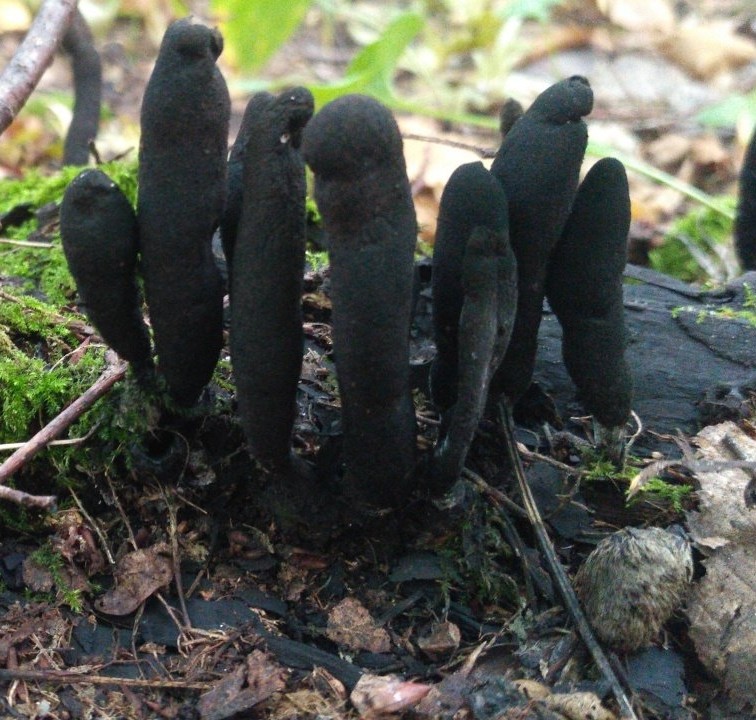Xylaria polymorpha (Xylaria polymorpha)
- Matagaluega: Ascomycota (Ascomycetes)
- Vaevaega: Pezizomycotina (Pezizomycotins)
- Vasega: Sordariomycetes (Sordariomycetes)
- Vasega laiti: Xylariomycetidae (Xylariomycetes)
- Poloaiga: Xylariales (Xylariae)
- Aiga: Xylariaceae (Xylariaceae)
- Tootoo: Xylaria
- ituaiga: Xylaria polymorpha (Xylaria diverse)
:
- Xylaria multiforme
- Xylaria polymorpha
- Polymorphic spheres
- Hypoxylon polymorphum
- Xylosphaera polymorpha
- Hypoxylon var. polymorphum

This strange fungus, often called “Dead Man’s Fingers”, can be found from spring to late autumn, as it develops very slowly. Young – pale, bluish, often with a whitish tip. Its pale outer covering is “asexual” spores, conidia, appearing at an early stage of development. By summer, however, the fungus begins to turn black, and by the end of summer or autumn it is completely black and withered. Somewhere in the middle of this transformation process, Xylaria multiforme really looks like “dead man’s fingers” terribly sticking out of the ground. However, in the final stages, most likely, it looks like a “gift” left by a house cat.
Xylaria polymorpha is the most common of the large Xylaria species, but the species name, “Dead Man’s Fingers”, is often applied broadly to include several species that differentiate by microscopic characters.
Faʻalogo: saprophyte on decaying deciduous stumps and logs, usually at the base of the tree or very close, but sometimes it can grow as if from the ground – in fact, there are always buried remains of wood in the ground. Can grow singly, but is more common in clusters. Causes soft rot of wood.
Tino fua: 3-10 cm in height and up to 2,5 cm in diameter. Rigid, dense. More or less like a club or finger, but sometimes flattened, may be branched. Usually with a rounded tip. Covered with pale bluish, grey-bluish, or purple dust of conidia (asexual spores) when young, except for a whitish tip, but becomes blackish with a pale tip as it matures, and eventually completely black. The surface becomes thinly dried and wrinkled, an opening is formed in the upper part through which mature spores are ejected.
Myakotb: white, whitish, very hard.
Uiga laititi: spores 20-31 x 5-10 µm smooth, fusiform; with straight germinal slits extending from 1/2 to 2/3 of the length of the spores.
Widely distributed throughout the planet. Usually grows in groups, prefers to live on rotten wood and stumps of deciduous trees, likes oaks, beeches, elms, can grow on conifers. Sometimes found on the trunks of weakened and damaged living trees. From spring to frost, ripened fruiting bodies do not collapse for a long time.
Le mafai ona 'aina. E leai se fa'amatalaga i mea oona.

Xylaria long-legged (Xylaria longipes)
It is much less common and is characterized by thinner, more elegant fruiting bodies, however, a microscope will be needed for final identification.
Has medicinal properties. In folk medicine in some countries it is used as a diuretic and as a drug to increase lactation.
Ata: Sergey.









